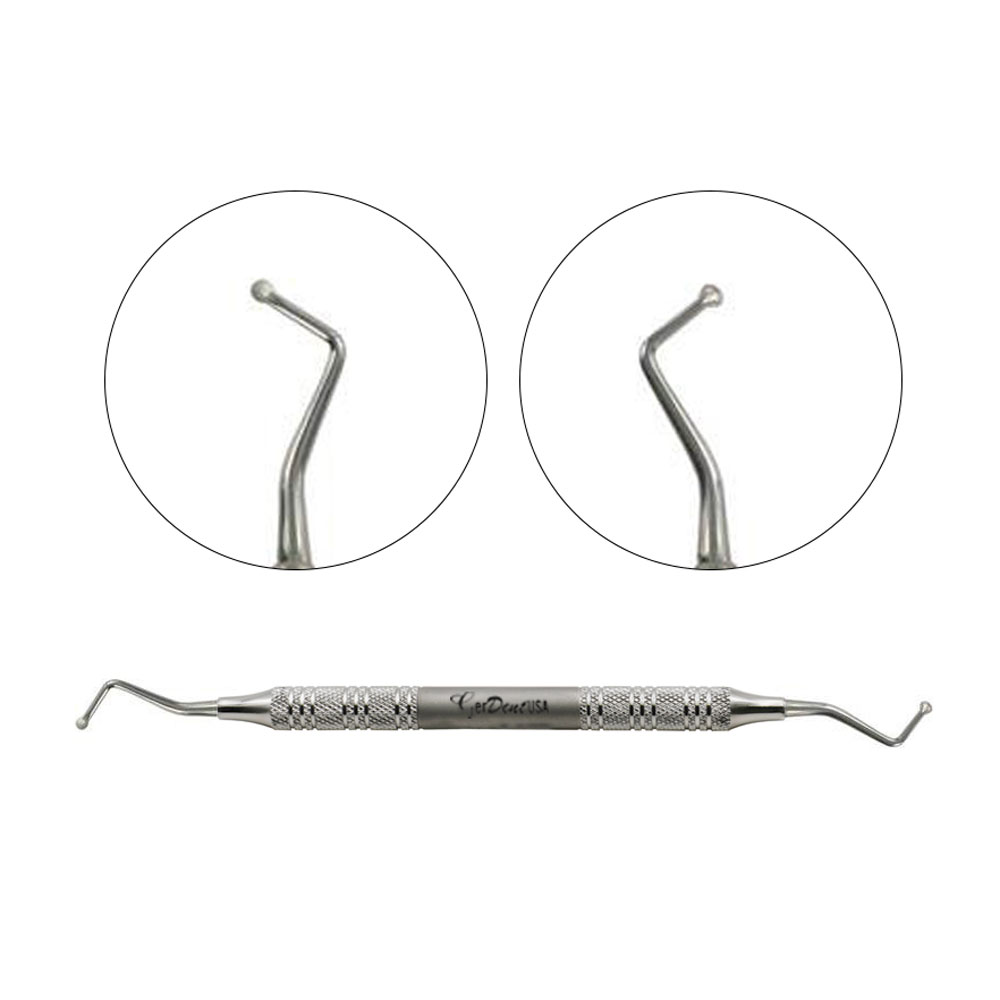Restorative dentistry involves the use of a myriad of dental instruments. This includes motor-driven and handheld instruments. Handheld instruments further include cutting and non-cutting dentistry tools. Among a vast array of these dental instruments, dental excavators have vital importance.
Excavators are instruments used to cut away carious dentin and preparing the tooth for placing restorations. These dentistry instruments are further divided into multiple types
1. Hatchets Excavator
2. Operative Hoes Excavator
3. Spoon Excavator
Hatchets have their cutting edges in the same plane as their handles. They are bi-beveled dental equipment. Hatchets mainly come in use for the preparation of internal retentive areas in direct gold fillings. They also sharpen internal line angles.
These instruments are used with push strokes. Push strokes are when the instrument is used with a direct cutting motion and lateral trimming motion.
Operative Hoe excavators have their blades and cutting edges perpendicular to the long axis of the handle. This instrument is mainly used for planing the walls of class three and class five preparations.
Dental spoon shaped excavator come in use for scooping away softened carious tooth structures. They are also used for carving away wax material for wax patterns in restorative dentistry.
Tips for using Dental Excavators
Excavators dental instruments are either held in a pen grasp or are held in a modified pen grasp. A pen grasp is when the excavator is held between thumb and forefinger; the middle finger acts as a rest below the instrument. The middle finger prevents the instrument from slippage during use.
Pen grasp involves movement from the wrist. Wrist movement calls for less power on the excavators dental instrument. It is more comfortable for the operator. In comparison, a modified pen grasp uses the thumb and index finger the same way as in the pen grasp.
Teeth on the same arch and close to the operator's site are used as oral rests. The middle finger is on the top of the instrument for better control of the instrument. The operator's palm is faced away from the working end of the instrument.
Periodically Check Your Instruments
Instrument maintenance is necessary. Periodic examination of the instruments is important to ensure that they are fit for purpose before use.
In addition, instruments need to be checked for their sharpness. Overuse of instruments tends to make the blades dull. There are many ways for the detection of a dull cutting edge of the instrument.
A sharp cutting edge does not reflect light, whereas a dull cutting edge reflects light. A dull dental surgical instrument has irregularities on its working surface. And a Dull instrument won't cut the tooth structure.
Hence, examining instruments before use is necessary to ensure that the working edges are sharp and will efficiently cut through the tooth structure.
Note: Quickly Replace your Instruments if You Found Any Dullness On Surface


